This 1973 Chevrolet Corvette is one of those cases of a restoration project that stalled before it could start. The car has been sitting for years, so there’s sure to be some work required before it can hit the road once again. The seller is advertising the vehicle on behalf of its owner, and he has provided some excellent photos in his listing. Located in Lutz, Florida, you will find the Corvette listed for sale here on eBay. Bidding has reached $9,601 in what is a No Reserve auction.
Taken at face value, this Corvette shows a lot of promise as a project car. The red paint that it wears isn’t original. The car rolled off the production line wearing Code 980 Orange, so it has received a color change at some point. I quite like the new shade, and if the buyer chose to retain it, I would understand that decision. It has a few scratches and defects, but it still holds a decent shine to pass as a daily driver. The fiberglass generally looks good, with no significant cracks or problems. The front bumper cover is missing, but the buyer should have no issues securing a correct replacement for around $460. The rear bumper and the remaining trim seem reasonable, while there are no problems with the glass. There are some corrosion spots visible on the Rally wheels, and this is not surprising when you begin to delve below the surface of this classic.
The underside of the Corvette reveals that this car has spent some time in a damp environment. There is a significant amount of corrosion present on the frame, but it appears that areas like the kick-ups are structurally sound. For the next owner to do this car justice and ensure its long-term survival, I don’t they will have much option beyond tackling this as a frame-off project. Anything less will risk compromising the Corvette’s structural integrity in the future as that surface corrosion makes the seamless transition to penetrating rust. We don’t receive any information on the state of the birdcage, but once again, there is the occasional glimpse of corrosion in the supplied photos. I generally advocate in favor of performing an in-person inspection on any potential vehicle purchase, and I believe that it would be worth the effort in this case. No shortage of enthusiasts have skipped this crucial step to their detriment. I’m not saying that this Corvette is a bad car, but the visible corrosion would make an inspection a wise move.
The Corvette is a numbers-matching classic, with an engine bay filled with the L82 version of Chevrolet’s 350ci small-block V8. Shifting duties fall to a 3-speed Hydramatic transmission, while the original owner chose to hand over the additional $46.00 to equip the car with power brakes and $113.00 for power steering. Interestingly, the L82 added $299.00 to the base price of a Corvette, while the LS4 big-block added a mere $250.00. That initially makes it seem surprising that 25% more buyers chose to follow the small-block path over the big-block. You would normally expect the opposite to be true in a classic like this one, but it is worth remembering that there was an energy crisis in full swing at this time thanks to the Arab Oil Embargo. That made big-block V8s a less attractive option for potential buyers. With 250hp on tap, this ‘Vette would have been capable of covering the ¼ mile in 15.3 seconds. This Chevy has spent many years hiding, and while it starts and runs, it can’t be considered a roadworthy proposition as it currently stands. It isn’t clear what would be required to return it to that point, but a thorough mechanical inspection will probably be a good starting point. Given the evidence of moisture exposure, particular attention will need to be paid to perishable components like brake hoses.
Taking a look around inside the Corvette gives plenty of positive vibes. The Saddle vinyl trim appears to be in good order, with no appreciable wear or problems. The same is true of the dash and most of the plastic pieces. There are some flaws on the lower edges of the door trims, but these are so small that I think that an upholsterer could fix them without the need to resort to replacements. The original radio has made way for what would have been a relatively expensive Alpine radio/cassette player, but that seems to be the only aftermarket addition. While it doesn’t feature such niceties as power windows, the original owner decided to equip it with air conditioning and a tilt/telescopic wheel.
I feel that the time might be suitable to return to the subject of moisture exposure. The carpet on both sides shows the same marks, which tend to indicate that plenty of water has found its way into the footwells in the past. Locating the leak source will be crucial in establishing how viable this classic is as a restoration project. There’s no evidence of any marks on the seats, and while that doesn’t exclude leaks through the top, it limits that possibility. Once again, I think that it warrants further investigation.
I know that by 1973 the Corvette had lost some of its performance credentials, but it could still offer respectable performance if the buyer ticked the right boxes on the order sheet. This isn’t a firebreathing monster, but extracting improved performance from the small-block is not difficult if the next owner isn’t concerned about spotless originality. I am worried about the level of corrosion visible in some of the supplied photos, and those alone would seem to justify an in-person inspection. For all of those questions, this car has still attracted some spirited bidding. Thirty-five bids have been submitted in this No Reserve auction, so are you tempted to join the party?
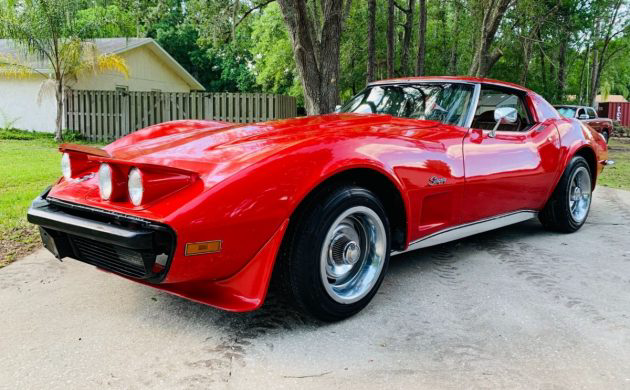

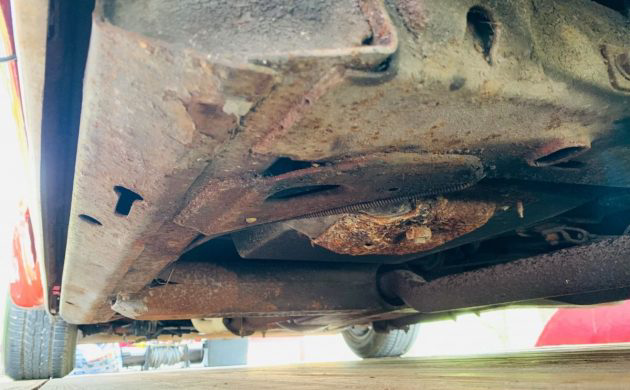
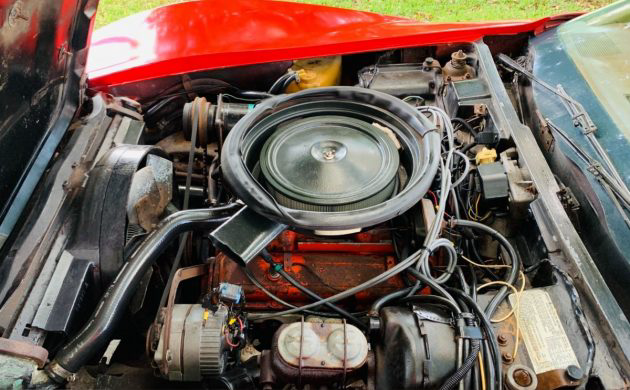
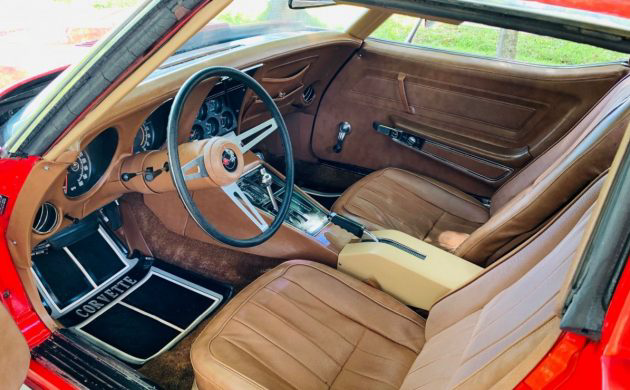
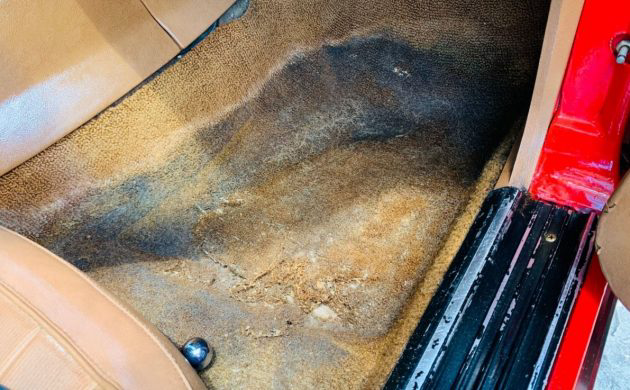
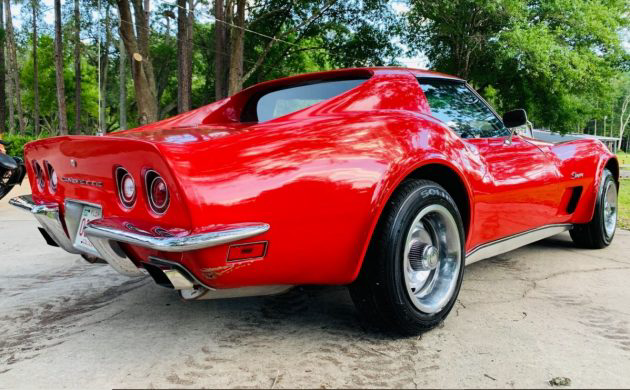


Water leaks and rusty floor pans aren’t a pretty site. Too bad that’s going on as it looks nice otherwise.
I don’t think just chroming the now exposed 5 mph metal front bumper of this ’73 would do much good.
73 had a urethane front bumper and chrome rear..
I meant simply chroming what’s now exposed instead of fitting a new urethane body colored front bumper – to try to please those that dislike the stock ’73 front bumper.
Should have kept the orange.
73 have a fiberglass floor.
I thought the 73’s still had the metal floor pans, thanks for the info.
I believe the metal floor pans came out in ’75 on the vette – because it was the 1st yr of the 2000 degree cat converter underneath that would have otherwise melted the passenger side fiberglass floor pan.
I wish all other cars ’74 & older had fiberglass floor pans instead of plain metal. & alumunum or stainless steel rockers & frames (or unibody support structures).
I suspect a flood car. Maybe not total, but high enough to get inside the car
Floors aren’t a problem as all of the C3’s are built like a boat, bonded together fiberglass. Also the main problem with water in the floors isn’t the t-tops or even a convertible roof. When it rains water POURS in through the left and right kick panels.It’s an aberration in the way the cars are put together new and as the fenders are bonded to the cowl the only time it would be feasible to try and fix is after a front end wreck. If you have an a/c car it slows the water down but nothing stops it if you have no air like my 69 convertible or my roommate at the times 73 t-top. It’s just a design mistake they never really fixed in the C3. You learned to park it nose downhill in the rain if you could, that helped.
The worst part of the rain through the kick panels is that the constant dampness causes a lot of the electrical contact to rust or corrode, the seat bases rust, and everything tends to get that light powdery white oxidation. I know, I’m restoring a 74 convertible. I’m not sure exactly where in the pillars the water comes in from though, Mike, do you know?
The firewall and cowl are bonded to the birdcage along the bottom of the windshield and down the door pillars. The bonds are not really water tight, there are bubbles, gaps, and spot-welds in the metal frame. All the water off the windshield is funneled down onto and into these seams, then into the car’s cabin, etc.
I put a full windshield frame in my ’71. After seeing all of this apart, I’ll never let it sit out or drive it in the rain again, if I can help it.
Ah the 73, my first Vette and money pit. Learned a lot buying that car, like don’t, have lots of money, enjoy being under it more than in it. Sure was pretty though, it had been repainted in a pearl white, black interior, low miles which I thought was a good thing until I found most of the seals were bad. Fond memories. I enjoyed my 99 a heck of a lot more.
I like it, it’s the year of old rear, new front, power was adequate, fill up windows are a minus, rust is the question, how rusty is it, regular cars show in the outside a prelude to what’s hiding beneath the surface
Is there a reason Corvettes are often listed as Chevrolet Corvettes? Is there another manufacturer making Corvettes?
The Vin Number decodes to the base L48 190 HP engine. Not the 250 HP L82.
The VIN number decodes this Corvette engine to be the Base L48 350CI 190 Horse Power engine. NOT the L82 350CI 250 Horse Power engine which is talked about in the above article. The description on E bay makes no mention of the L82 engine.